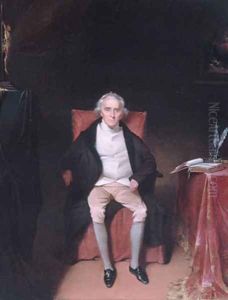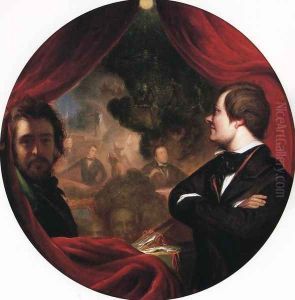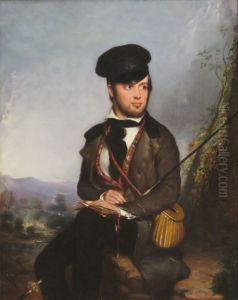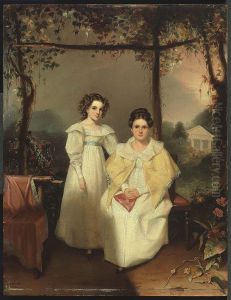William James Hubard Paintings
William James Hubard was a versatile and skilled artist best known for his work as a silhouette cutter, painter, and sculptor. He was born on January 19, 1807, in Warwickshire, England. Hubard displayed a talent for art at a young age, particularly in creating detailed silhouettes, which was a popular form of portraiture at the time. His skill was notable because he was able to cut these intricate profiles freehand without the aid of mechanical devices, which were commonly used by other artists in the trade.
Hubard’s talents gained recognition, and in 1824, at the age of 17, he was brought to the United States by an entrepreneurial promoter to exhibit his silhouette cutting abilities. He toured the country, creating silhouettes of many prominent figures and capturing the interest of American patrons. This form of portraiture was especially appealing before the widespread availability of photography, as it offered an affordable and swift means of capturing a person's likeness.
In the course of his career, Hubard's interests and skills expanded beyond silhouette cutting. He became proficient in painting and sculpture, creating works in these mediums that were well received by the public and critics alike. Despite his success, Hubard’s life was marked by a series of business failures and financial struggles, often due to the mismanagement of his exhibitions by others.
One of Hubard's notable contributions to the arts was the establishment of the Hubard Gallery in Richmond, Virginia, which became a center for cultural activity and featured many of his paintings and sculptures. His work often depicted historical scenes and figures, which were popular among the American audience of the time.
Hubard's life was cut short when he died tragically in a foundry accident in Richmond on November 28, 1862. Despite his early death, Hubard left behind a legacy of being one of the most talented silhouette artists of his time and a respected figure in the American art scene of the 19th century. His works remain in collections and are studied for their historical value and the skill they exhibit.




